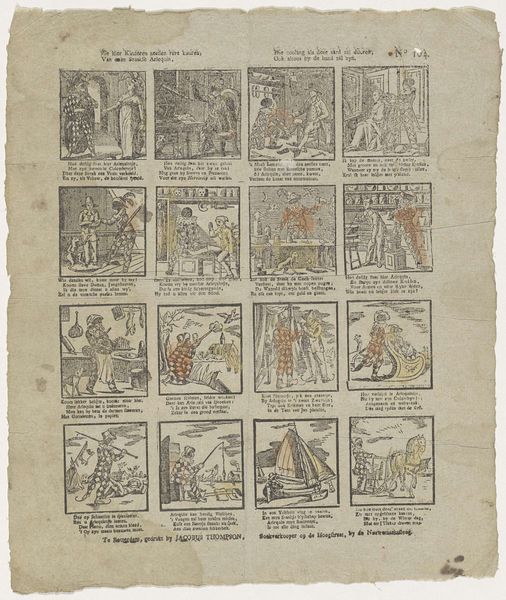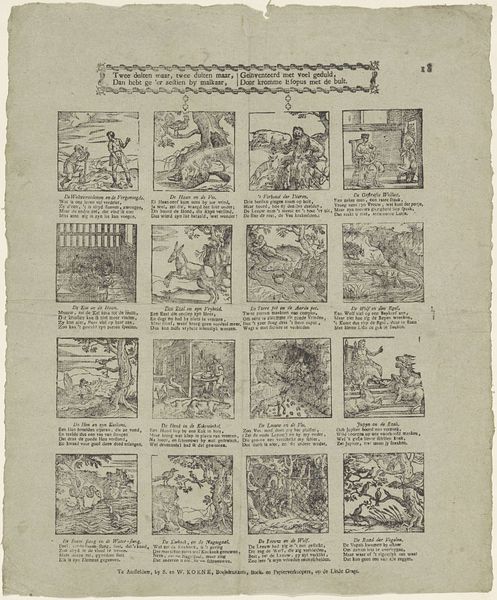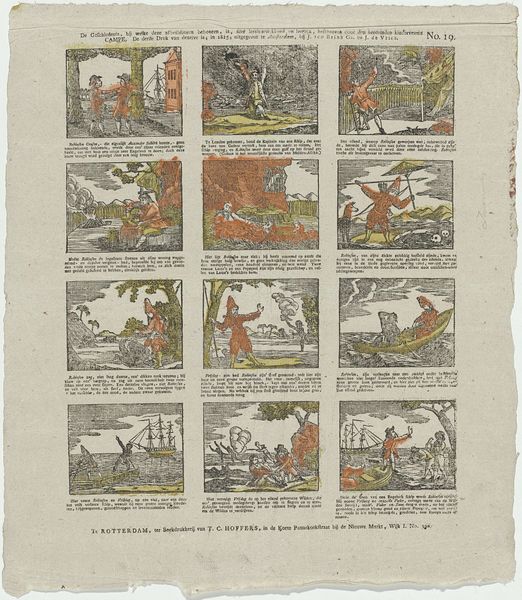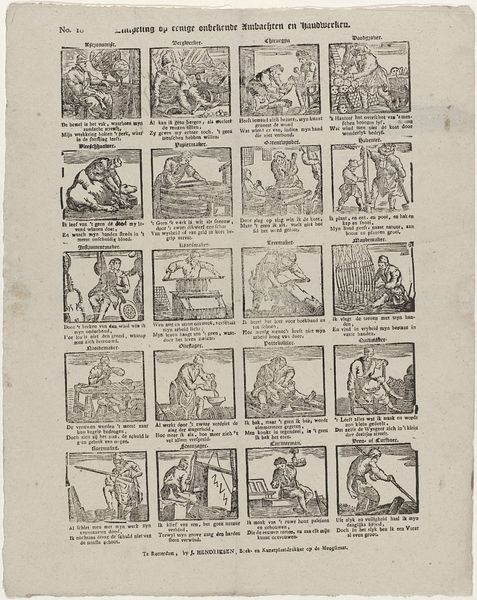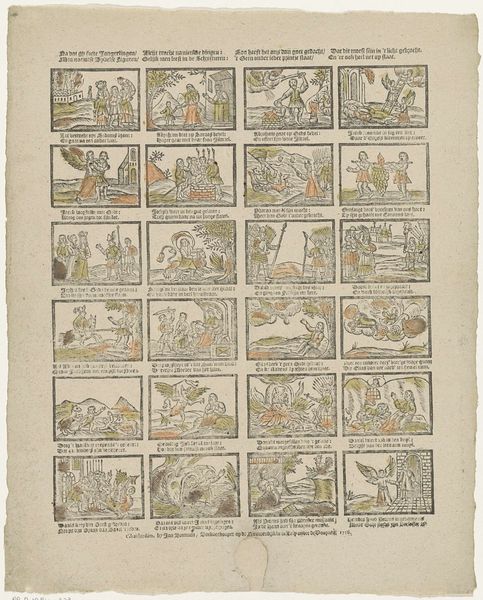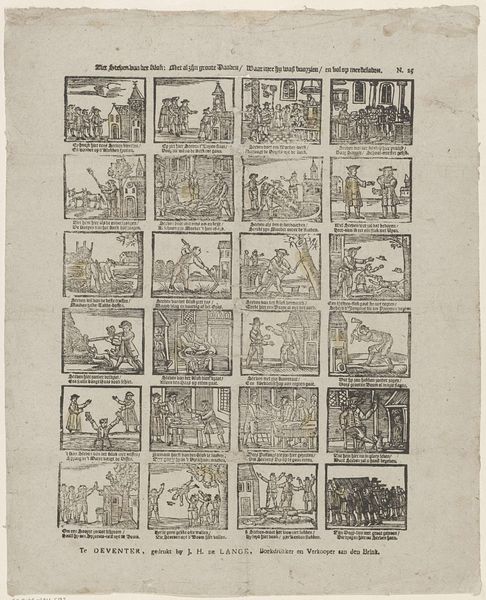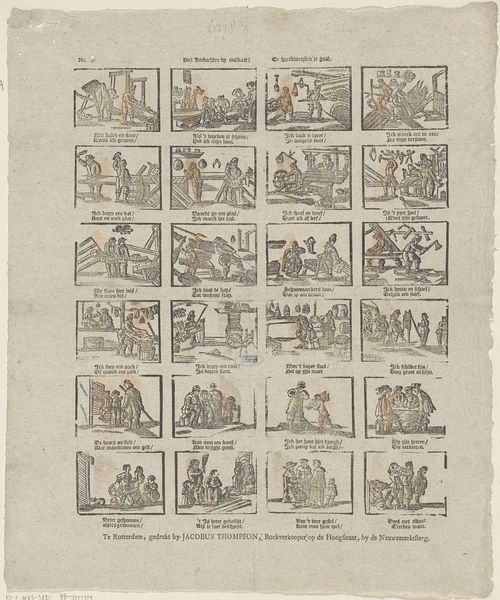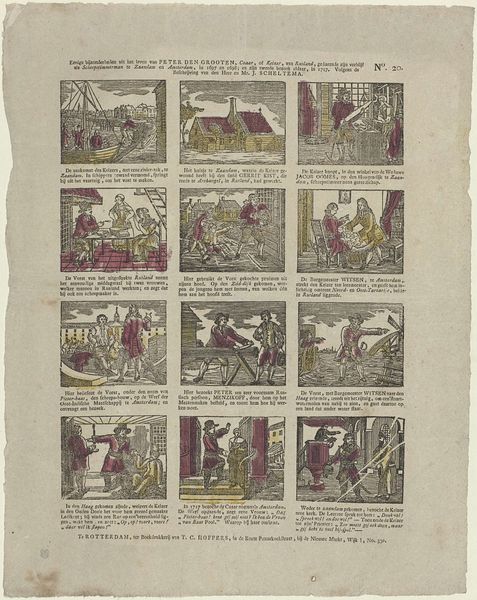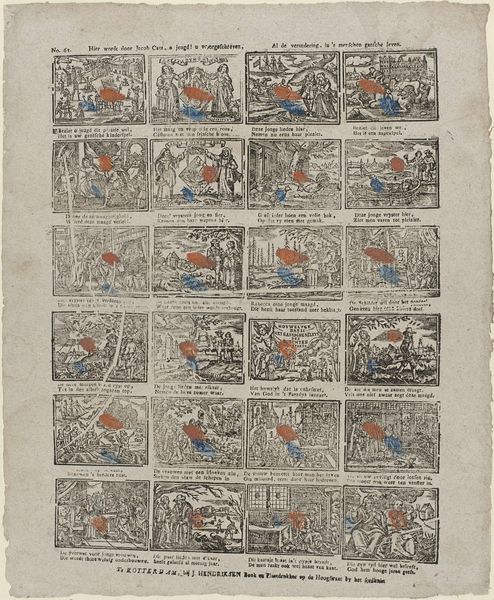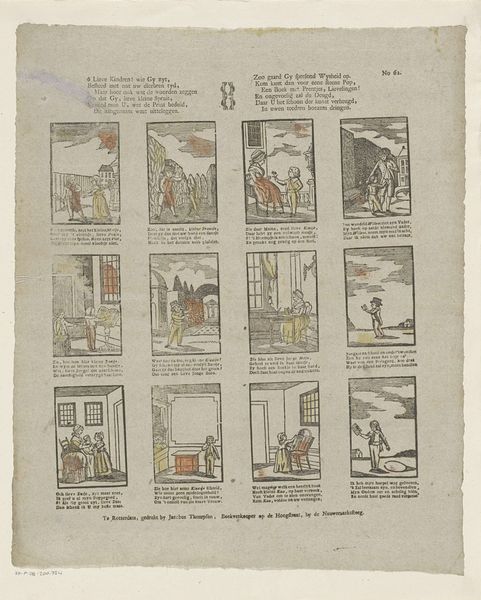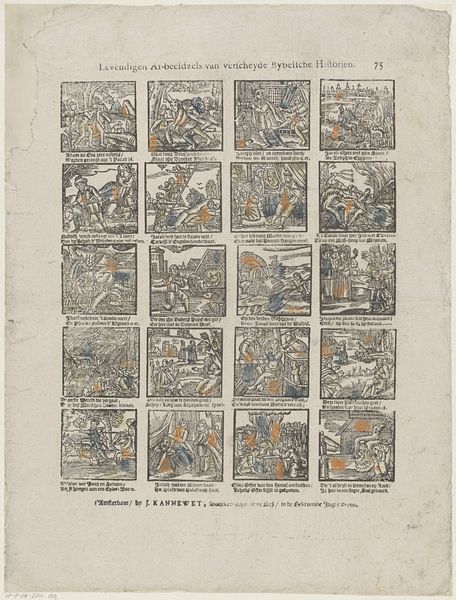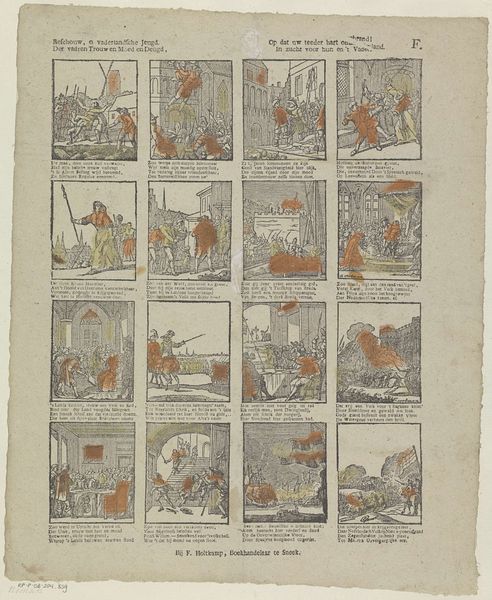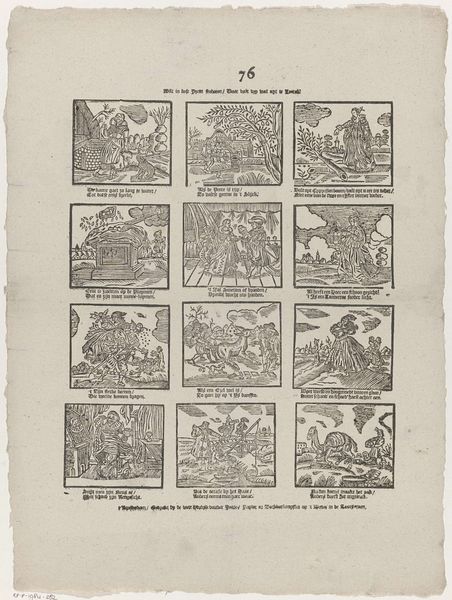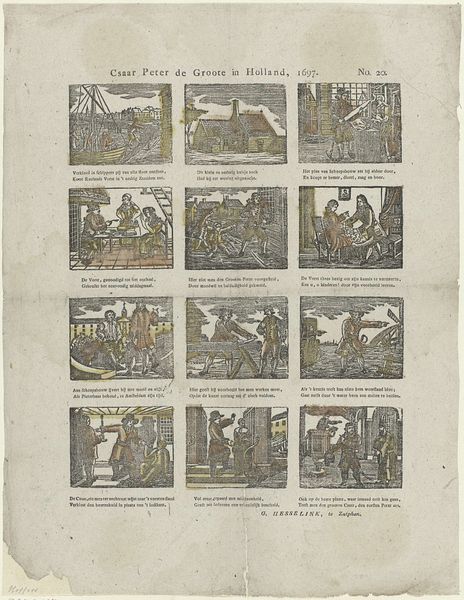
Kom vrindinnetjes kom vrindjes, / Hier zyn twintig mooije printjes (...) 1814 - 1830
0:00
0:00
print, woodcut
#
narrative-art
# print
#
folk-art
#
woodcut
Dimensions: height 415 mm, width 330 mm
Copyright: Rijks Museum: Open Domain
Curator: Here we have an intriguing broadsheet titled "Kom vrindinnetjes kom vrindjes, / Hier zyn twintig mooije printjes (...)," which roughly translates to "Come little friends, come little friends, here are twenty pretty prints." Dating from around 1814 to 1830, this anonymous work resides in the Rijksmuseum and is crafted from a woodcut print. Editor: My first impression is of folk tales and early printed illustration—it feels very raw and almost unsettling. Each little vignette hints at a story, but the whole effect is quite fragmented. Curator: Precisely! It functions as a kind of illustrated primer, drawing from popular stories and fables circulating at the time. What’s striking is the visual language. Editor: The simplified forms of animals, like wolves and bears, are repeated within their panels. Is this consistent within Dutch printmaking of the early 19th Century? I wonder about the economics involved in its creation. Were these inexpensive and rapidly consumed images? The repetitive use of forms within various panels could be for ease and economy, yes? Curator: Yes, these prints were produced and sold in vast quantities and affordable. Though crudely cut and colored, they reveal much about popular anxieties and social structures of the period. Consider the consistent presence of predation and potential violence here: do we find reflected an attitude towards a seemingly natural chaotic order in things, I wonder? Editor: I noticed the peculiar choice of leaving areas of red coloring, almost like spot-color, is only used on figures—to distinguish them from their backgrounds I wonder? They leap forward to modern eyes used to highly coloured printing techniques of all kinds; that touch makes the prints feel very immediate. Curator: It serves to highlight figures amidst complex and at times muddy backgrounds and help give clarity. Colors can encode meaning as well. For example, here, what is the emotional resonance of the red coloring that has been utilized? The way in which archetypes play in Dutch visual traditions of the day is worth more inspection. Editor: Yes, there's something powerful about seeing the basic shapes combined in allusions to traditional cultural mores, these echoes have a kind of beauty. The simple means create powerful meanings; I find the image as a whole quietly compelling. Curator: And for me, it’s a reminder of the enduring power of visual storytelling—how essential images are for cultural transmission and processing reality.
Comments
No comments
Be the first to comment and join the conversation on the ultimate creative platform.
